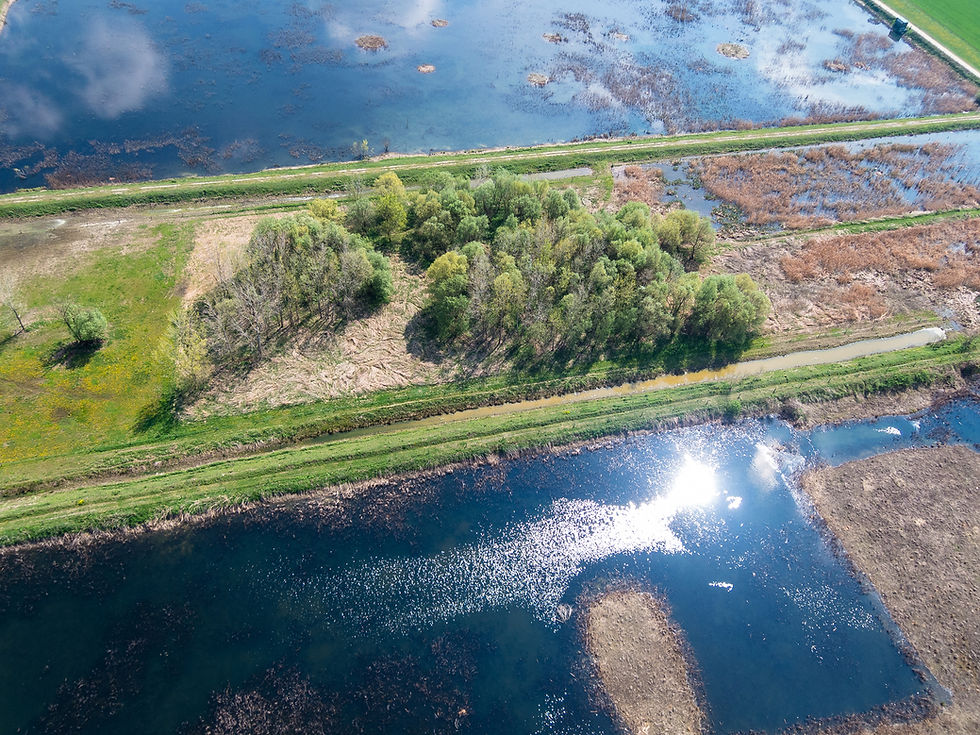Sugar and Birds (and Buffaloes): Ormož Basins Nature Reserve
- kapjasa
- Apr 17, 2019
- 2 min read
A rare - and sweet - story of a fruitful cooperation of nature conservationists and heavy industry.

The fertile fields of Prlekija by the river Drava are perfect for growing sugar beet, so a sugar factory was built in Ormož in 1979. The processing of sugar beets into sugar requires special wastewater disposal pools (those are actually shallow basins filled with water and leftover soil and beet peels, regularly dredged). The pools of Ormož Sugar Factory soon attracted birds and other wildlife, and their ecological importance was recognised by members of bird watching society DOPPS - Birdlife Slovenia.

Unusually for heavy agroindustry the management of Ormož Sugar Factory was eco-friendly; with their help members of DOPPS built breeding rafts for common terns, started adjusting the water regime and introduced late mowing of the embankments, thus creating a real focal point of ornithological diversity in Slovenia and an important Natura 2000 core area.

In 1997 the factory was sold to a Dutch company Royal Cosun. In 2006, after huge drops in sugar prices and tightened EU regulations the owners decided to close the factory - and then something almost unimaginable happened: as the factory was closed, the lagoons were not managed anymore so they were about to be overgrown. And the managing board of the factory decided - in a couple of minutes - to simply donate the entire area to DOPPS for the establishment of a nature reserve, thus saving this immensely important ecosystem.

Ormož Basins, a 55 hectares wetland of anthropogenic origin, lies within the Drava River ecosystem by the Ormož Lake. It consists of shallow pools with reeds and rushes, surrounded by flooded forest, a rare remainder of an extensive riparian forests in Slovenia. The wetland is of exceptional national and international significance for many endangered bird species.

Ormož Basins are an important waterbird nesting site and a key rest stop for migratory birds in Slovenia. 29 breeding waterbird species have been spotted here, including endangered and rare species such as little bittern, little crake, ferruginous duck, black-winged stilt, common redshank and common tern. During migration, 30 species appear regularly, sometimes numbering as much as ten thousand birds, among which wood sandpiper and ruff are the most numerous.

The extensive pools and the banks are managed in a quite natural way: with a 24 strong herd of water buffalo (Bubalus bubalis) that graze around, preventing overgrowing of the delicate pools (and, due to their sheer size, are an imposing security detail).

If you find yourself in the area, don't forget to visit this exceptional place. You can find more info on Ormož Basins Nature Reserve on DOPPS website and the site of project LiveDrava, riparian ecosystem restoration of the lower Drava river in Slovenia.


All kite aerial photos shot with Nikon P330 on the venerable Rokkaku.





Comments